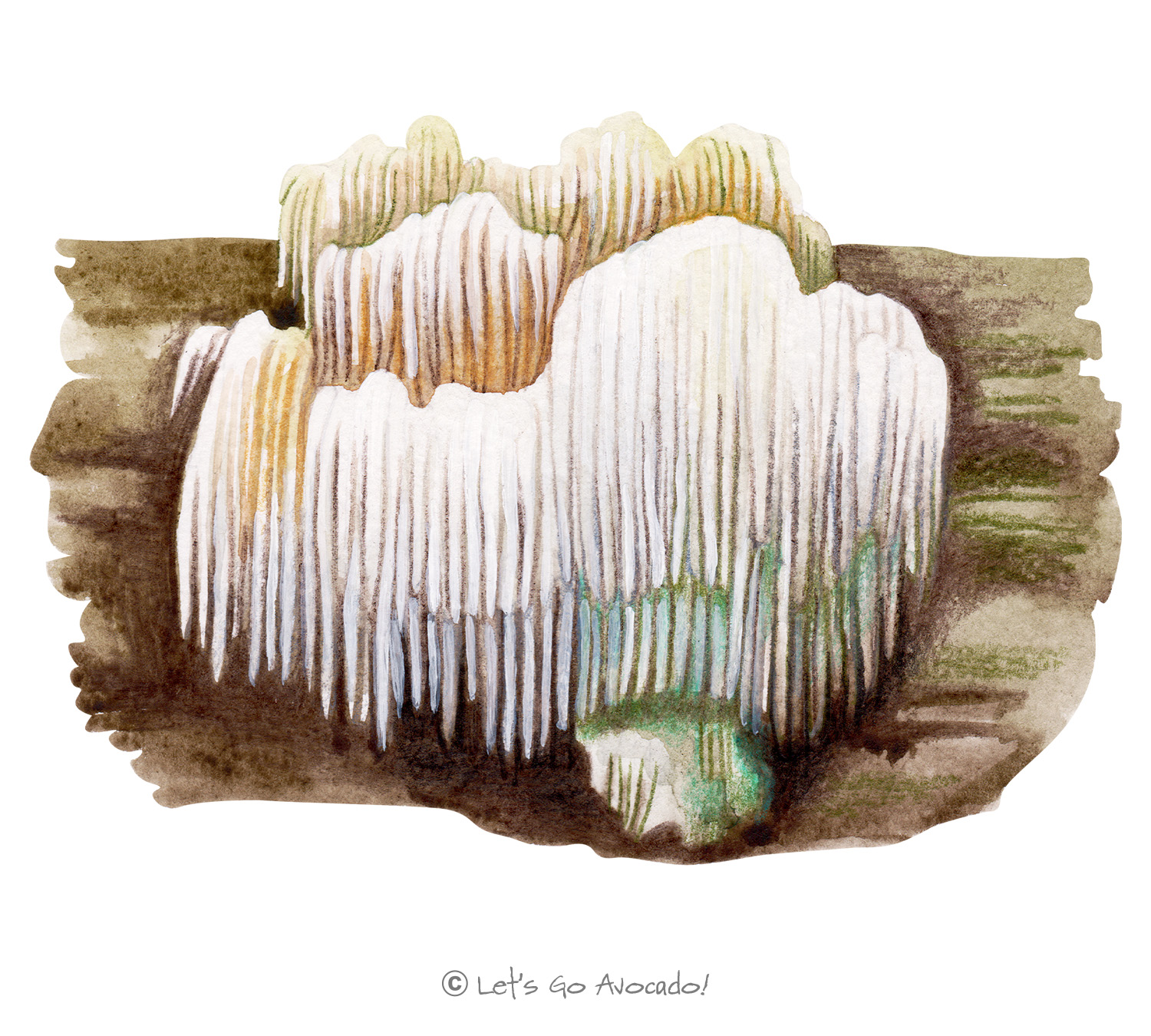

Bear’s Head Tooth Fungus
Bear's Head, Lion's Mane, Satyr's Beard, Monkey's Head.
Hericium americanum
This page may contain affiliate links.
Read our disclosure and privacy policy here.
The Bear’s Head Tooth Fungus is a distinctive and fascinating fungi characterized by its cascading, icicle-like spines from which the spores are released. Its appearance is somewhat reminiscent of the mane of a white bear, giving rise to its common name.
Bear’s Head Tooth Fungus
Common Name
Bear’s Head Tooth Fungus
Other Names
Bear’s Head, Lion’s Mane, Satyr’s Beard, Monkey’s Head.
Latin Name
Hericium americanum
Distribution
Predominantly in North America, especially in the eastern parts of the continent. They are commonly found on hardwood trees, particularly on oak and beech.
Appearance
This mushroom has no traditional cap. Instead, it features cascading white spines or teeth which hang down, giving it its unique appearance. These teeth turn yellow-brown with age.
Size
The fruiting body can range between 10 to 30 cm across.
Habitat
Found on dead or dying hardwood trees, especially on wounds or broken branches.
Diet
Saprophytic; decomposes wood.
Lifecycle
Like other fungi, it starts as spores that germinate to form myceliumMycelium is like the ‘root’ or the ‘body’ of a fungus. Just as plants have roots, fungi have mycelium. It is made up of tiny thread-like structures called hyphae that spread out in the soil or other materials where the fungus grows. Learn More. The mycelium then forms the fruiting body with its distinctive spines. As the spines mature, they release more spores to propagate the fungus.
Defense Mechanisms
Its appearance, growing on high branches or wounds on trees, makes it less accessible to many potential predators. Furthermore, its unique texture may not be appealing to some herbivoresHerbivores are animals that eat plants as their main source of food. They are like the vegetarians of the animal kingdom. Just as you eat fruits, vegetables, and other plant-based foods, herbivores munch on leaves, flowers, grass, and other parts of plants..
Ecological Importance
The Bear’s Head Tooth Fungus helps in the decompositionDecomposition is a natural process that happens when living things, like plants, animals, or other organic matter, break down into simpler substances. It is a part of the circle of life and plays an essential role in recycling nutrients back into the environment. Learn More of wood, contributing to the nutrient cycling in the ecosystemsAn ecosystem is a community of living organisms, like insects and birds, and non-living components, like water and rocks, that interact with each other in a specific area. Learn More where they are found.
ConservationThe act of protecting and preserving natural resources and the environment. Conservation efforts are important to protect beavers and their habitats. Status
Not specifically listed as endangered, but like all fungi, habitat loss and changes can impact populations.

There’s a lot to explore right where we are, in our own neighborhoods and backyards! Join us while we get off the couch and explore the everyday wonders of nature, science, space, engineering, art, and anything else we stumble upon during on our adventures.







